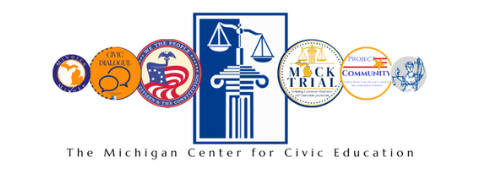This lesson teaches students about the development and role of the Constitution of the United States. Students will learn about the relationship between the Constitution and a democratic government
Civics Lessons
The Constitution in Today’s America
New Jersey v. T.L.O. (1985)
This case summary provides teachers with everything they need to teach about New Jersey v. T.L.O. (1985). It contains background information in the form of summaries and important vocabulary at three different reading levels, as well a review of relevant legal concepts, diagram of how the case moved through the court system, and summary of the decision. This resource also includes seven classroom-ready activities that teach about the case using interactive methods.
Investigating the Departments of the Executive Branch
In this lesson, students learn about the role of bureaucracy in U.S. government; they then examine the history, leadership, organization, and goals of executive agencies.
Life, Liberty, and the Pursuit of Happiness: A Lesson on the Declaration of Independence
Students will understand the meaning and central ideas of the Declaration of Independence; cite textual evidence to analyze this primary source; and analyze the structure of the document.
The Jury System
In this lesson, students identify pros and cons of jury trials and judge-only trials, plus develop and respond to questions that might help to ensure the selection of a fair and unbiased jury.
Korematsu v. United States (1944)
This case summary provides teachers with everything they need to teach about Korematsu v. United States (1944). It contains background information in the form of summaries and important vocabulary at three different reading levels, as well a review of relevant legal concepts, diagram of how the case moved through the court system, and summary of the decision. This resource also includes nine classroom-ready activities that teach about the case using interactive methods.
The Verdict of History
Features seven of the 20 most significant opinions of the first two centuries of the Michigan Supreme Court. from racial segregation in schools to eugenics laws to whether being a member of a nudist colony constitutes indecent exposure, The Verdict of History lesson plans teach student to think critically, develop their decision-making skills, and understand how the judicial system applies to their own lives.
Mable vs. Clearwater Sheep and Cattle Company
Case developed for the 2005 Michigan High School Mock Trial Tournament
Civil Case-Liabilty, water pollution
Teaching about Due Process
This lesson presents the idea of Due Process. Students learn about Due Process with a scenario that sets out a number of issues that have to do with the due process of law.
Judiciary Act of 1789
The purpose of this lesson is to teach students about the significance of the Judiciary Act of 1789 in establishing a federal judiciary, and the power of judicial review as outlined by the landmark U.S. Supreme Court Case, Marbury v. Madison (1803). By the conclusion of this lesson, students will understand the key provisions of the Judiciary Act of 1789 and the structure of the federal judiciary, as well as the power of judicial review.

